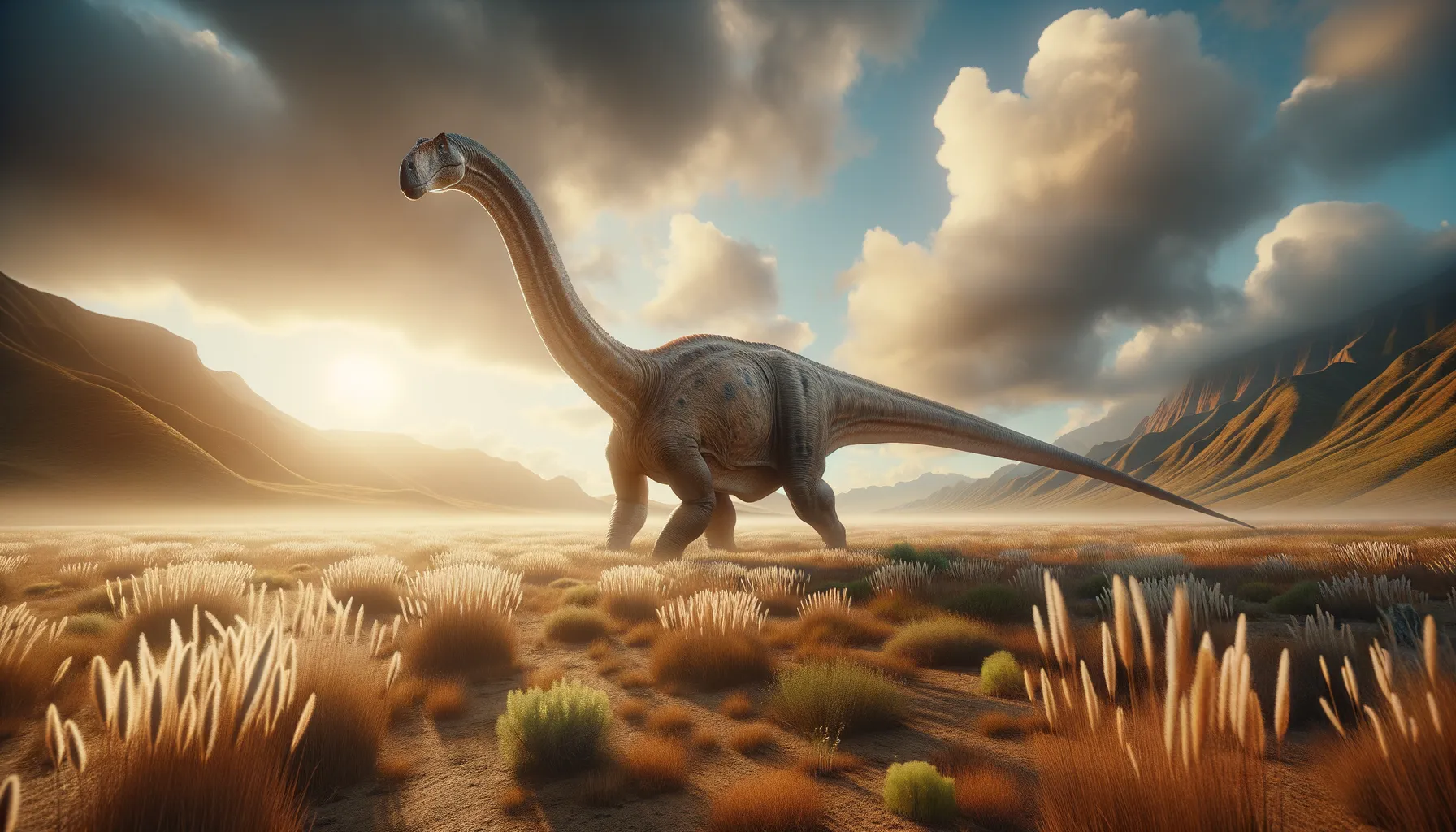
Suuwassea
The gentle giant of the Jurassic world.
Period
Jurassic
Length
Roughly 50 feet from head to tail.
Height
About 8 feet at the hip.
Weight
Approximately 4 to 6 tons.
Suuwassea was a sauropod dinosaur that lived during the late Jurassic period. Known for its long neck and large body, it roamed the hot, semi-arid plains of what is now North America. Despite its enormous size, it was a herbivore, feeding on various plant life. Suuwassea had a unique set of vertebrae at the base of its neck, which distinguished it from other sauropods.
Diet
Suuwassea was a herbivore, feeding on a variety of vegetation. Its long neck allowed it to reach higher branches and leaves otherwise inaccessible to ground-dwelling creatures.
Hunting
As a plant-eater, Suuwassea did not hunt. Instead, it likely spent much of its time moving from place to place, browsing for the most nutritious plant life available.
Environmental challenges
Suuwassea lived in a period characterized by fluctuating climate conditions, which could lead to changing availability of food sources. The competition with other large herbivores for resources was a constant concern. Additionally, predators like Allosaurus posed a threat, especially to the young and weak members of its species.
Speed
Moderate, suited for large, heavy creatures.
Lifespan
Estimated around 70 to 80 years.
First discovery
Discovered in Montana, USA, in 1999.
Fun Facts
- Suuwassea lived during the Late Jurassic period, about 150 million years ago.
- The name 'Suuwassea' means 'ancient thunder,' inspired by the Crow language.
- Suuwassea was a sauropod, a type of long-necked dinosaur, similar to the well-known Diplodocus.
- Its fossils were first discovered in the state of Montana in the United States.
- Suuwassea had a relatively short neck compared to other sauropods.
- Scientists believe Suuwassea may have had a unique pattern of neck spines or features compared to its relatives.
- Despite its size, Suuwassea was likely a gentle giant, feeding on plants.
Growth and Development
Suuwassea experienced rapid growth during early life stages, which was common among large dinosaurs to reach a size where they were less vulnerable to predators. As they grew, their skeletal structure developed to support their massive size, especially in the neck. Adult Suuwassea may have had a stabilizing growth pattern as they reached full size.
Habitat
Suuwassea thrived in semi-arid environments with scattered plant life, primarily located in what is now the western United States. These areas featured open plains and some vegetation, including ferns and conifer trees. The climate during its time was warmer, with seasonal variations.
Interaction with other species
Suuwassea coexisted with a variety of other dinosaur species, including both herbivores and carnivores. It often likely traveled in herds for protection against predators. Within its habitat, it also interacted indirectly through competition for food with other large herbivores.
Natural lifespan
Suuwassea naturally lived up to around 80 years.
Reproduction
Suuwassea likely reproduced by laying eggs, as is common among dinosaurs. Nests would have been made in secluded areas to protect the eggs from predators. Hatchlings were vulnerable and depended on rapid growth to reduce their risk of predation.
Social behaviour
Suuwassea likely exhibited herd behavior, which provided safety in numbers from predators. Social structures might have been simple, with possible dominance hierarchies based on size and age. Communication was possibly through vocalizations and physical gestures.
Fossil locations
Fossils of Suuwassea have primarily been found in the Morrison Formation of Montana, USA. These findings have provided significant insights into the dinosaur's anatomical features and environment. The location indicates it once roamed a landscape rich with diverse dinosaur fauna.
